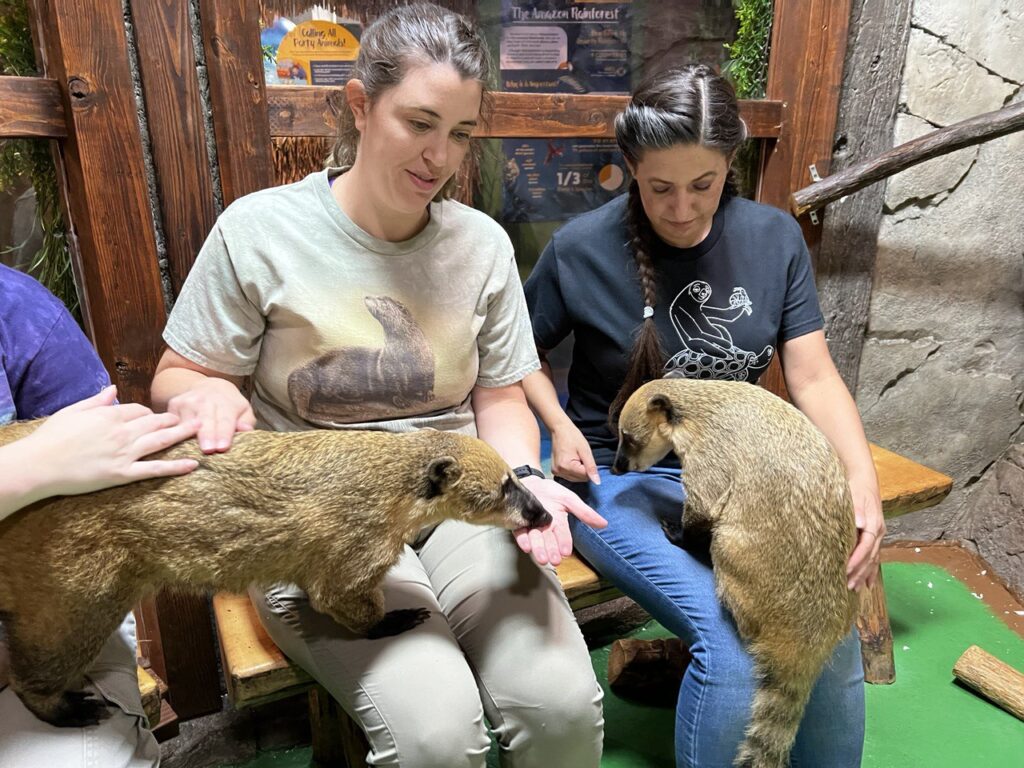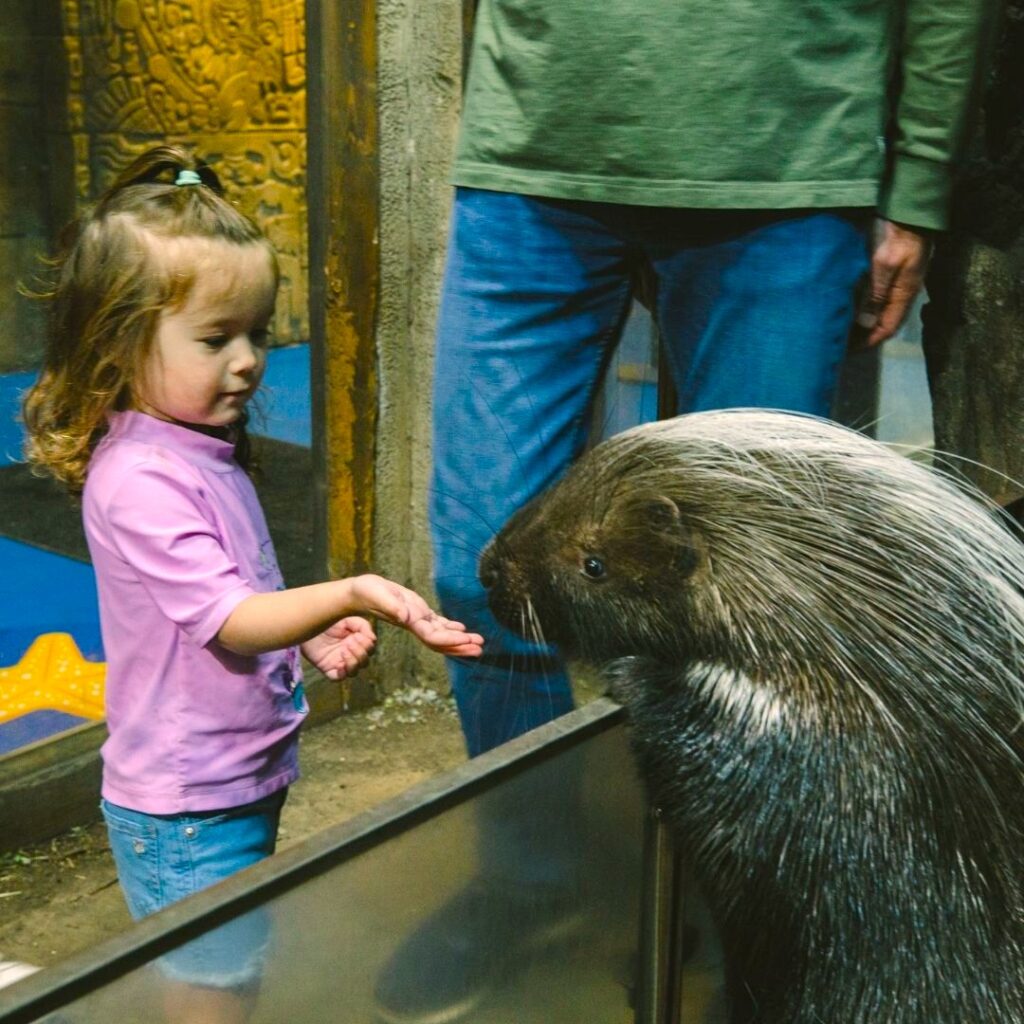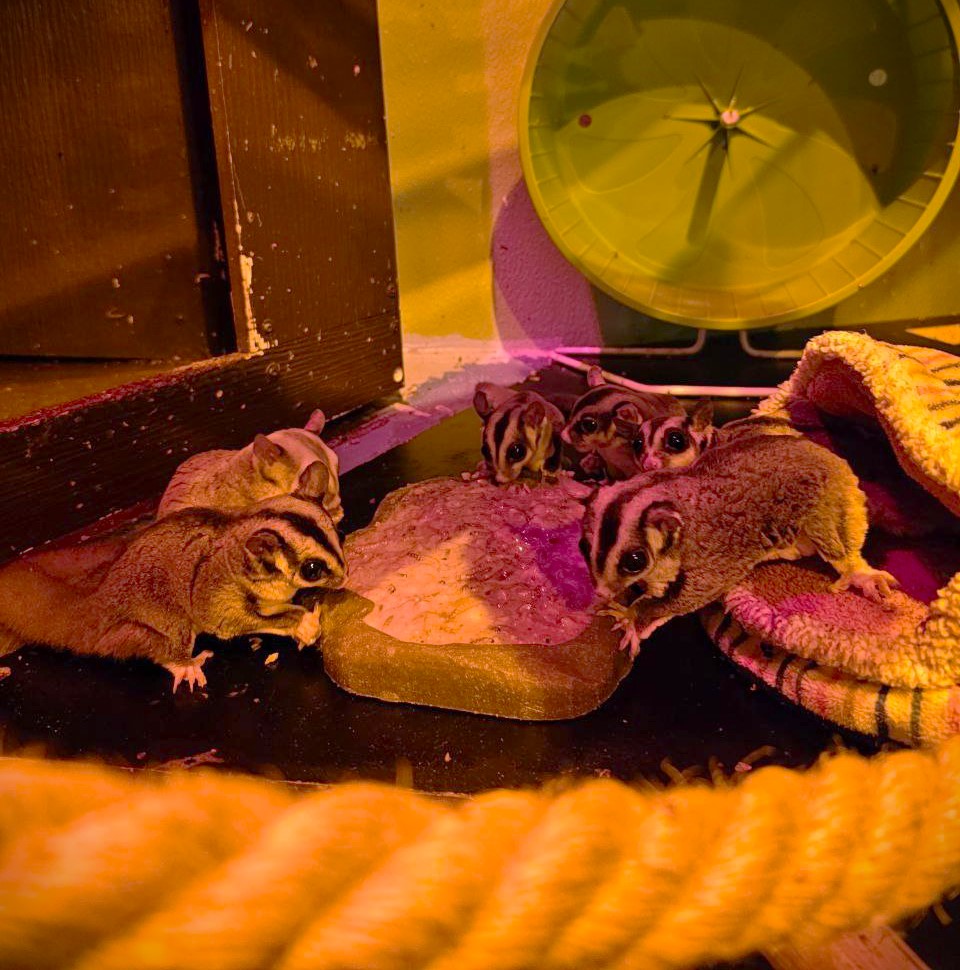The Stunning & Colorful Macaw Parrot
Share it on:
Probably the most recognizable breed of parrot in the world is the macaw parrot. Known for their long tail and colorful feathers, they are easy to spot at SeaQuest [city] [state]. Unfortunately, many species of this vivid feathered friend might be at risk of extinction, so see the macaws in our SeaQuest specialists’ loving care and read below to learn more about the fantastic macaw.
Bright Colors & Even Brighter Personalities of the Macaw Bird
This social bird is known not only for its large size, being the largest of all parrots, but also for its recognizable voice. The macaw can be heard calling with their loud screeches, and some have been known to mimic sounds, so they might just be saying hello! This, combined with their entertaining demeanor, has led to many macaws being domesticated and kept as pets. Just like other pets, macaws are known to have different personalities, likes, and dislikes!
However, owning a macaw can be extremely challenging. The large size of macaws presents a challenge, being that they are usually between two and 4 feet long! Another challenge is that due to their specific personalities, many macaws that are not regularly handled or lack mental stimulation can become destructive, territorial, or aggressive. The macaw needs regular activity, stimulation, and attention to thrive in an environment. Owning a macaw is a big commitment since some live an average of 60 years, and some have been recorded to live up to 80 years!
EGG-sellent Facts About the Macaw Parrot
The macaw is a fascinating and beautiful bird, so we know these facts will have you squawking!
- Male and female macaws look alike, a trait that is uncommon among brightly colored birds.
- The macaw flies, nests, and feeds in pairs, family groups, or flocks.
- Macaws can fly up to 15 miles every day, searching for food.
- Macaws are native to South and Central America and prefer a tropical climate.
- Many people have domesticated certain species of macaws and kept them as pets.
- A macaw’s beak is strong enough to crack a coconut shell.
- There are over 20 species of macaws.
Risk of Extinction: Dangers That the Macaw Parrot Faces
The colorful feathers of the macaw have attracted the attention of humans throughout history. In pre-Columbian civilizations, the macaw’s feathers were often traded as currency, used as adornment, and used to create textiles. This bird is a special part of history but has faced severe dangers in present times.
A majority of macaw species are threatened with extinction or are endangered. In fact, over five species are already extinct! The Cuban macaw, Dominican macaw, Jamaican green and yellow macaws, and Guadeloupe macaws are already extinct. Considered a threatened species, they are essential subjects of conservation. The main issues paving the way to extinction for the macaw are illegal trapping of macaws for the pet trade, the rising rate of deforestation in their ecosystem, and hunting. Although some macaws are kept as pets, most breeds are targets of poachers for the exotic bird trade.
See & Interact with the Stunning Macaw
SeaQuest is home to a variety of macaws. The scarlet macaw, the blue and gold macaw, and the green wing macaw are just a few of our feathery friends that call SeaQuest home—interested in something a bit more aquatic? Educate yourself about different sea life forms like The Six Types Of Sharks That Call SeaQuest Home or The Magical Moon Jellyfish.
Lastly, visit SeaQuest [city][state] to learn more about conservation and animals’ ecosystems. While you’re there, learn about the SeaQuse Cares initiative, which tackles several wildlife issues!
[tickets]




